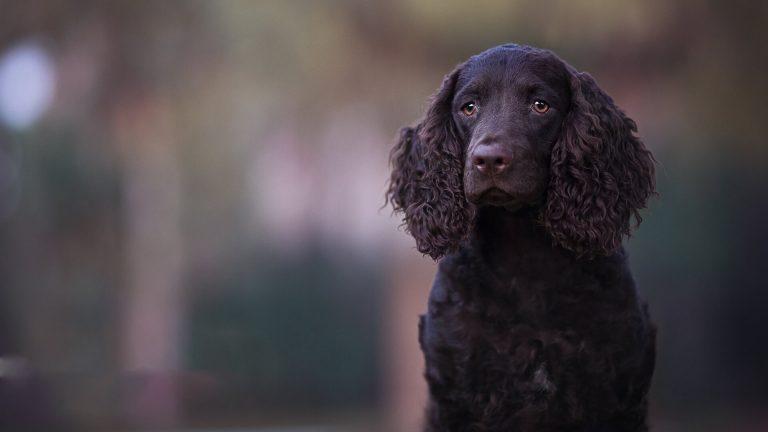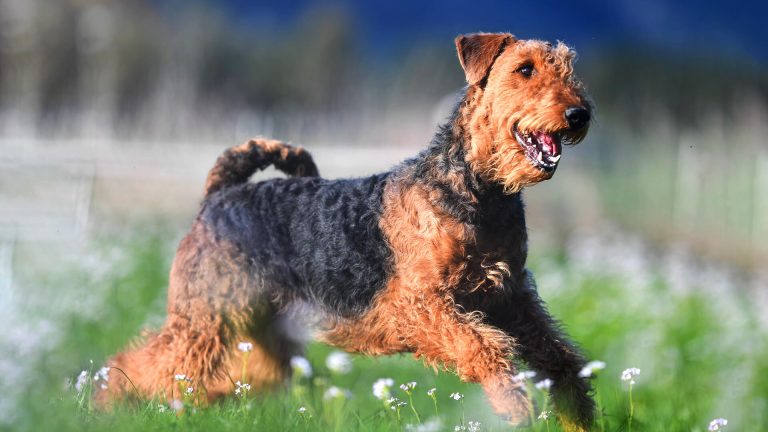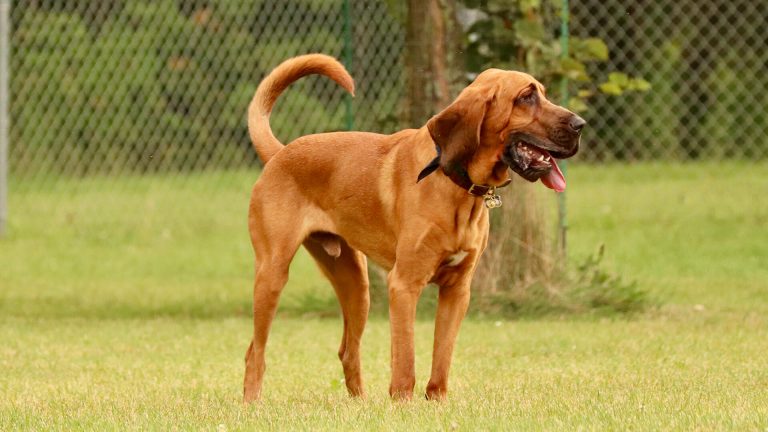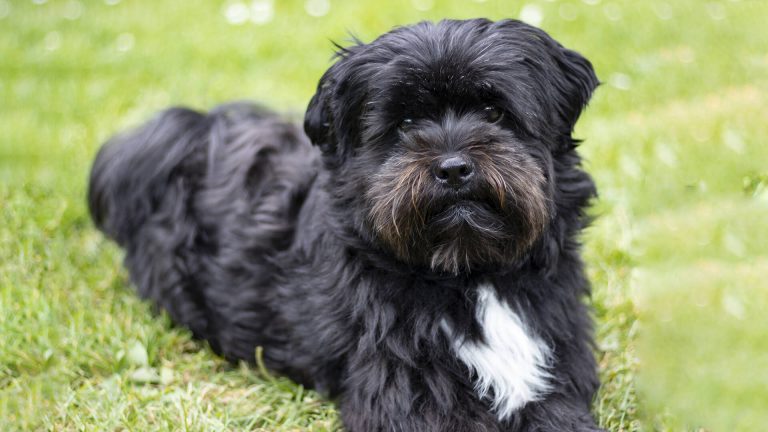The Australian Cattle Dog, also known as the Blue Heeler or Queensland Heeler, is a breed of herding dog that originated in Australia in the 19th century. The breed was developed by crossbreeding the Dingo with various herding breeds, including the Collie, the Dalmatian, and the Kelpie. The result was a tough, intelligent, and agile dog that was well-suited to the harsh Australian climate and the demanding work of herding cattle on the vast open ranges of the outback.
Distinctive Features of Australian Cattle Dog
| Breed Name | Australian Cattle Dog |
| Lifespan | Up to 15 years |
| Size | Medium |
| Weight | 35-50 pounds |
| Height | Up to 20 inches |
| Coat | Short, dense, and weather-resistant double coat |
| Color | Blue or red speckled with or without black or tan markings |
| Health risk | Moderate (may be prone to certain health issues like hip dysplasia and progressive retinal atrophy) |
| Unique trait | Strong herding instincts and stamina |
| Famous for | Versatile working abilities and intelligence |
| Temperament | Alert, intelligent, and loyal |
| Maintenance | Moderate (requires regular exercise and grooming) |
| Adaptability | Moderate to high (can adapt to different living environments) |
| Behavior | Generally good with children, but supervision is recommended |
| Personality | Energetic, active, and protective |
| Social | May be reserved with strangers and other animals if not properly socialized |
Australian Cattle Dogs are medium-sized dogs with a sturdy, athletic build. They have a short, smooth coat that is typically blue, blue-mottled, or red-speckled in color. The breed is known for its intelligence and agility, and is well-suited to a variety of tasks, including herding, obedience, and agility competitions. Australian Cattle Dogs have a lifespan of 12-15 years and are typically 18-20 inches tall for males and 17-19 inches tall for females, with weights ranging from 35-50 pounds for males and 30-45 pounds for females.
How to Take Care of Pet Australian Cattle Dog?
Taking care of a pet Australian Cattle Dog involves several aspects, including their diet, exercise, grooming, training, and healthcare. Here are some guidelines to help you provide proper care for your Australian Cattle Dog:
How to Set Up Habitat for a Pet Australian Cattle Dog?
Australian Cattle Dogs are energetic and active dogs that require plenty of space to run and play. If you are keeping an Australian Cattle Dog as a pet, it is important to provide a secure and spacious yard for them to exercise in. The yard should be fenced to prevent the dog from escaping and should have plenty of shade and shelter to protect them from the elements.
Inside the home, Australian Cattle Dogs are generally well-behaved and do not require a lot of space. They are comfortable in a variety of living arrangements, including apartments and small homes, as long as they receive sufficient exercise and attention. It is important to provide a comfortable and secure place for your Australian Cattle Dog to sleep, such as a crate or a dog bed, and to ensure that they have access to fresh water at all times.
What to Feed Your Pet Australian Cattle Dog?
Australian Cattle Dogs are generally healthy and require a balanced diet to maintain their energy and vitality. A good diet for an Australian Cattle Dog should include high-quality protein sources, such as meat, fish, and eggs, as well as carbohydrates, vegetables, and fruits. It is important to feed your Australian Cattle Dog a diet that is appropriate for their age, size, and activity level, and to avoid overfeeding or underfeeding them.
Some good options for feeding your Australian Cattle Dog include:
- High-quality dry or wet dog food: Look for a brand that is formulated for the specific needs of active, working dogs and that contains a balanced blend of protein, carbohydrates, and nutrients. Avoid brands that contain a lot of fillers or artificial additives.
- Fresh, whole foods: You can also supplement your Australian Cattle Dog's diet with fresh, whole foods, such as cooked meat, fish, eggs, and vegetables. Just be sure to avoid any foods that are toxic to dogs, such as onions, garlic, and grapes.
- Homemade meals: If you prefer to make your own dog food, you can create a balanced diet using a combination of protein sources, carbohydrates, and vegetables. Just be sure to consult with a veterinarian or a canine nutritionist to ensure that you are providing all of the necessary nutrients.
What to Avoid Feeding Your Pet Australian Cattle Dog?
There are a number of human foods that can be toxic to dogs and should be avoided when feeding your Australian Cattle Dog. Some common toxic foods include:
- Chocolate: Chocolate contains a chemical called theobromine, which can be toxic to dogs. Dark chocolate and unsweetened baking chocolate are the most dangerous, but even small amounts of milk chocolate can be harmful.
- Grapes and raisins: Grapes and raisins can cause kidney failure in dogs, even in small amounts.
- Onions and garlic: Both onions and garlic contain compounds that can damage a dog's red blood cells and cause anemia.
- Avocado: Avocado contains a chemical called persin, which can cause vomiting and diarrhea in dogs.
- Macadamia nuts: Macadamia nuts can cause muscle tremors, lethargy, and hyperthermia in dogs.
- Alcohol: Even small amounts of alcohol can be toxic to dogs, causing vomiting, diarrhea, difficulty breathing, and even coma or death.
Brushing, Bathing and Grooming Needs of Pet Australian Cattle Dog
Australian Cattle Dogs have a short, smooth coat that is relatively easy to groom. They require regular brushing to remove loose hair and to keep their coat healthy and shiny. It is generally recommended to brush your Australian Cattle Dog once or twice a week, using a slicker brush or a comb.
Australian Cattle Dogs only need to be bathed as needed, usually every two to three months. When bathing your Australian Cattle Dog, be sure to use a mild, dog-specific shampoo and to rinse thoroughly to avoid leaving any soap residue on the skin.
In addition to regular brushing and bathing, Australian Cattle Dogs may also require other grooming tasks, such as nail trimming and ear cleaning. It is generally recommended to have a veterinarian, or a professional groomer handle these tasks to avoid any accidents or injuries.
Health Concerns of Pet Australian Cattle Dog
Like all breeds, Australian Cattle Dogs are prone to certain health issues. Some common health concerns for this breed include:
- Hip dysplasia: This is a genetic condition that causes the hip joint to develop abnormally, leading to pain and lameness.
- Eye problems: Australian Cattle Dogs may be prone to eye problems, such as cataracts and progressive retinal atrophy (PRA), which can cause vision loss.
- Skin allergies: Australian Cattle Dogs may be prone to allergies, which can cause itching, redness, and inflammation of the skin.
- Deafness: Some Australian Cattle Dogs may be born deaf or may develop deafness as they age.
To help prevent these and other health problems, it is important to feed your Australian Cattle Dog a balanced diet, provide them with regular exercise, and visit a veterinarian regularly for check-ups and screenings.
Training and Playing with Pet Australian Cattle Dog
Australian Cattle Dogs are intelligent and energetic dogs that require regular mental and physical stimulation to stay happy and healthy. To keep your Australian Cattle Dog engaged and well-behaved, it is important to provide them with plenty of opportunities for training and play.
Some ways to train and play with your Australian Cattle Dog include:
Obedience training: Australian Cattle Dogs are highly intelligent and respond well to obedience training. Basic commands, such as sit, stay, and come, can help to build a strong bond between you and your dog and can also help to prevent behavior problems.
Agility training: Australian Cattle Dogs are agile and athletic, and enjoy participating in activities that challenge their coordination and speed. Agility training involves guiding your dog through a series of obstacles, such as tunnels, jumps, and weave poles, and can be a fun and rewarding activity for both you and your dog.
Playtime: Australian Cattle Dogs are energetic and playful, and enjoy a variety of toys and activities. Some good options for playtime include fetch, tug-of-war, and hide-and-seek.
Other Pets to Keep or Avoid with Australian Cattle Dogs
Australian Cattle Dogs are generally good with other pets, including cats, as long as they are properly socialized and trained. However, as with any breed, it is important to monitor your Australian Cattle Dog's interactions with other pets and to intervene if necessary to prevent any aggressive behavior.
It is also important to remember that Australian Cattle Dogs are bred to herd and may exhibit herding behavior towards other pets and even humans. This can sometimes be frustrating or annoying to other pets, so it is important to train your Australian Cattle Dog not to herd excessively.
Facts About Australian Cattle Dog
Here are some interesting facts about Australian Cattle Dogs:
- Australian Cattle Dogs are also known as Blue Heelers or Queensland Heelers.
- The breed was developed in the 19th century to help herd cattle on the vast open ranges of Australia's outback.
- Australian Cattle Dogs are highly intelligent and are often used as working dogs in a variety of roles, including herding, search and rescue, and therapy work.
- Australian Cattle Dogs are known for their stamina and endurance, and are capable of working for long periods of time in harsh conditions.
- Australian Cattle Dogs are generally friendly and loyal, but may be reserved with strangers and may be territorial with other dogs.
What It's Like to Keep an Australian Cattle Dog as a Pet?
Australian Cattle Dogs make excellent pets for active, responsible owners. They are intelligent, loyal, and energetic, and thrive on regular exercise and mental stimulation. With proper training and socialization, Australian Cattle Dogs are generally well-behaved and make great companions for people of all ages.
However, it is important to remember that Australian Cattle Dogs are working dogs and require a lot of attention and exercise to stay happy and healthy. They are not well-suited to a sedentary lifestyle and may become destructive or anxious if left alone for long periods of time.
Frequently Asked Questions About Australian Cattle Dog
Some of the generally asked questions about Australian Cattle Dog are answered below:
Are Australian Cattle Dogs good with kids?
Australian Cattle Dogs are generally good with kids, but may be energetic and boisterous, especially when they are young. It is important to supervise any interactions between kids and dogs and to teach kids how to interact safely and responsibly with pets.
Are Australian Cattle Dogs easy to train?
Australian Cattle Dogs are highly intelligent and generally respond well to training, especially when it is positive and consistent. However, like all breeds, they can be stubborn at times and may require patience and persistence to train effectively.
Do Australian Cattle Dogs shed a lot?
Australian Cattle Dogs have a short, smooth coat that sheds moderately. They may shed more during certain times of the year, such as during the spring and fall, but regular brushing can help to control shedding.
Are Australian Cattle Dogs prone to health problems?
Like all breeds, Australian Cattle Dogs are prone to certain health problems. Some common health concerns for this breed include hip dysplasia, eye problems, skin allergies, and deafness. To help prevent these and other health problems, it is important to feed your Australian Cattle Dog a balanced diet, provide them with regular exercise, and visit a veterinarian regularly for check-ups and screenings.
How much exercise does an Australian Cattle Dog need?
Australian Cattle Dogs are energetic and active dogs that require a lot of exercise to stay healthy and happy. It is generally recommended to provide your Australian Cattle Dog with at least an hour of moderate to intense exercise per day, such as walks, runs, or playtime.







